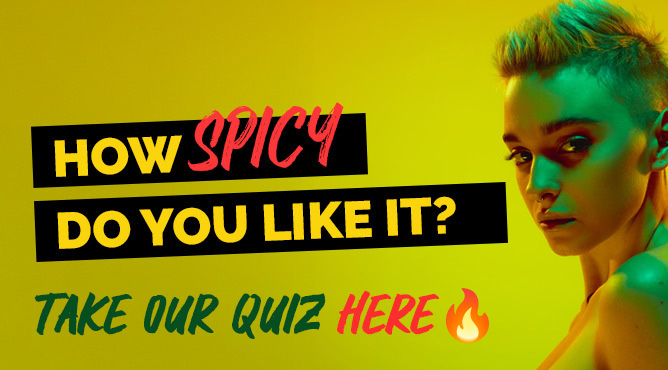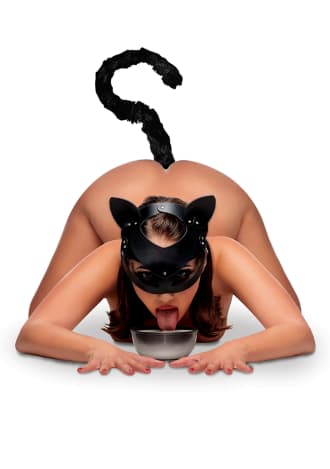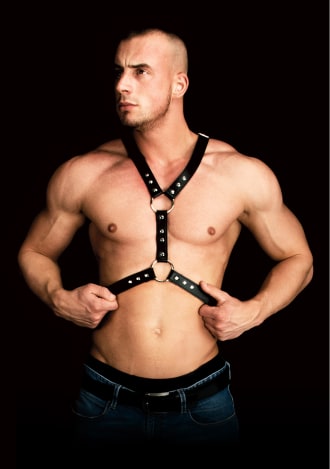The Place Of Kink At Pride
Kink at Pride has become an unexpectedly divisive issue, so before we get into why that is, we’re just going to go right ahead and show our hand upfront: we’re in favour.
But those who disagree, and believe that kink and Pride should be kept separate, have some compelling reasons for doing so. Let’s have a quick review of the back and forth on this issue.
The debate here is not one of any particular passion or anger, at least not within the community itself. It’s a considered and nuanced conversation, and in general, most people tend to see the merits of the opposite side’s arguments. Extreme opinions exist, but they tend to be limited to groups of people you might expect to have a negative view of kink already, regardless of its relationship to Pride.
Argument Against: Freakishness
The most uncomfortable anti-kink argument is one of public perception. Kink and Pride are not synonymous: one term describes a sexual style, the other refers to sexuality. The two things do not necessarily overlap: kinkiness does not dictate sexual identity, and vice versa.
But critics do conflate the two – or, at least, they worry that the non-LGBTQI+ public will conflate them. Critics argue that including kink at Pride events may reinforce negative stereotypes about the LGBTQ+ community and hinder progress towards broader societal acceptance. The inclusion of chest harnesses, and puppy play, and sometimes ageplay, as well as urophilia and public sex, make the wider LGBTQI+ community look… freakish by traditional standards when much of the community may not even share those particular kinks.
The implication is that by representing overtly ‘alternative’ kinds of sex at Pride, we might be setting back the progress we’ve made in the last few decades by further alienating more conservative, mainstream communities, or at least making the fight for equal treatment that much harder for ourselves.
Argument For: Freakishness Much of the very point of Pride is a joint protest for inclusion and a celebration of diversity. Sometimes that means celebrating things we don’t personally have any particular taste for. Our community is inclusive, and that means we can afford no gatekeepers. Including kink at Pride events acknowledges and embraces the diverse range of sexual expressions and identities within the LGBTQ+ community. It provides a space for individuals who engage in kink practices to feel accepted and supported.
Not to mention, growing up kinky when you don’t think anyone else will understand you is incredibly lonely. We’re willing to accept the pay-off for kink at Pride: that for every 50 people who might be annoyed by the representation of kink at Pride, one person might see themselves in reflection, and dig their way out of loneliness. That’s worth annoying some folk.
Dark Horse Pony Head Harness With Silicone Bit
Argument Against: Family-Friendliness
Critics will point to Pride’s reputation as a family-friendly celebration as a reason why kink should be tucked away somewhere discreet. Here, our own logic gets used against us, as we just said that Pride should be all-welcoming and all-accepting, which sounds family-friendly. While we want to be inclusive, but it’s difficult to reconcile that when being inclusive might mean including explicit sexual acts and potentially including kids in the same area.
Argument For: Family-Friendliness
It’s hard to argue with that. Kink is, not necessarily by definition but certainly by reputation, NOT family-friendly. It’s true that there is generally, even its most restrained forms, the chance of nudity and at least implied sexual activity.
A lot of us who have been doing this for a while, though, accept that those things fall under the broad umbrella of ‘freedom of expression’ – in this case, sexual expression. While it should be obvious that not everyone is ready to be confronted by overt sexual activity, that’s not what Pride is about.
Pride is an opportunity for people to express themselves authentically, free from societal conventions and expectations. By including kink at Pride, it recognizes that individuals have the right to explore and celebrate their sexuality in ways that may be considered non-traditional or unconventional.
Taken as a whole, that is a very positive and healthy message, and it’s ultimate of benefit to younger generations.
Cat Tail Anal Plug And Mask Set
Argument Against: Decency
Criticism of kink at Pride often includes safety and consent concerns. Some argue that public displays of kink at Pride events may create an environment where consent and boundaries are more difficult to establish and maintain. Concerns revolve around the potential for non-consenting individuals, including those who may not be comfortable with explicit sexual displays, to be exposed to content they find… inappropriate.
Argument For: Decency
Forgive an opinion here. I personally, me, the real actual person actually writing this, dislike it when arguments of nuance, like consent, are used against us. We were the ones fighting to have conversations about personal agency and consent brought to the mainstream. When those of a conservative disposition use them against us, I suspect an undercurrent of point-scoring. It feels disingenuous, as though they only care about consent when its theirs being trespassed.
Ouch! Thanos - Chest Centerpiece
But let’s meet it on its own terms. The LGBTQ+ community has a long history of challenging societal norms around sexuality and fighting for sexual liberation. Including kink at Pride events can be seen as a continuation of this legacy, as kink has often been stigmatized and marginalized. It provides an opportunity to reclaim and celebrate sexual practices that have been historically misunderstood or misrepresented.
But here’s the thing. Yes, it’s potentially more difficult to establish boundaries at Pride. But this is how we learn about consent. Consent can’t just be read in a textbook, it’s a living thing, and it needs to be practiced.
In Kinklusion;
Remember that Pride is a celebration, but it’s also a protest, a struggle for equality. People in the LGBTQI+ community tend to have a better-than-average sexual literacy, which is a fancy way of saying that we do tend to be kinkier. It’s more a part of our culture than mainstream culture. For that reason, love it or hate it, kink is already part of Pride.
So, get on board.
If you'd like to learn more about how to use physical restraints or spanking equipment, check out our wider blog resources.












